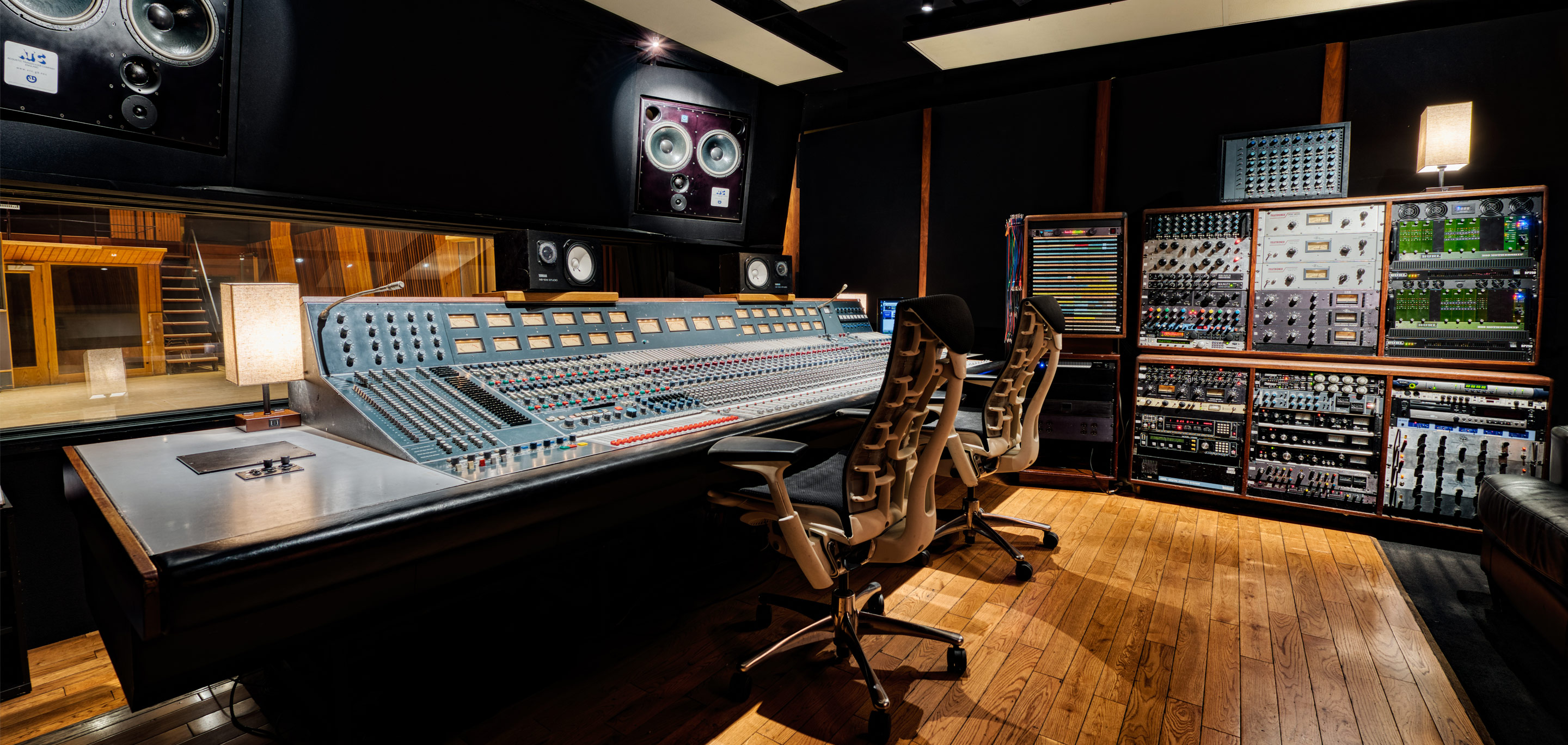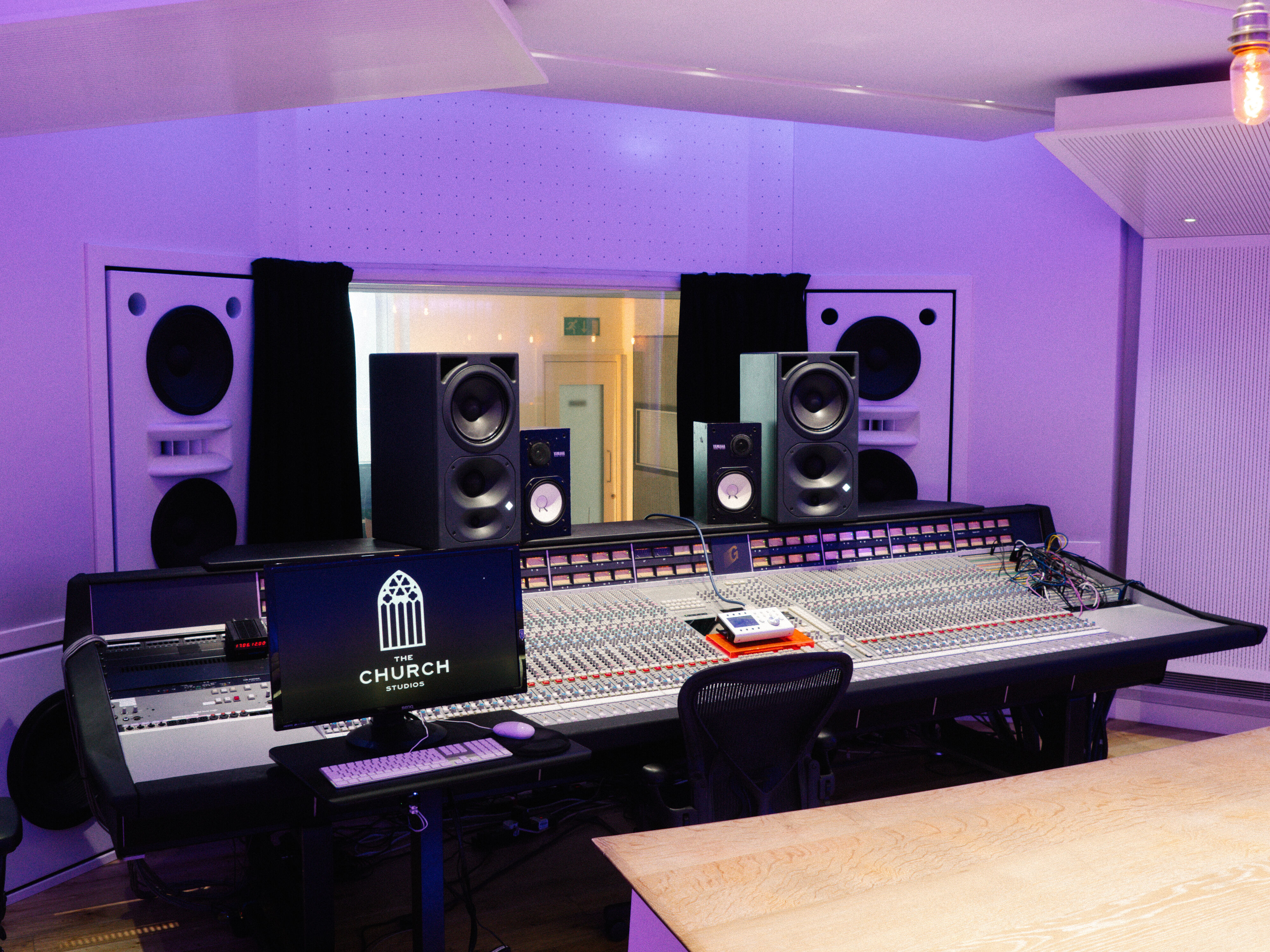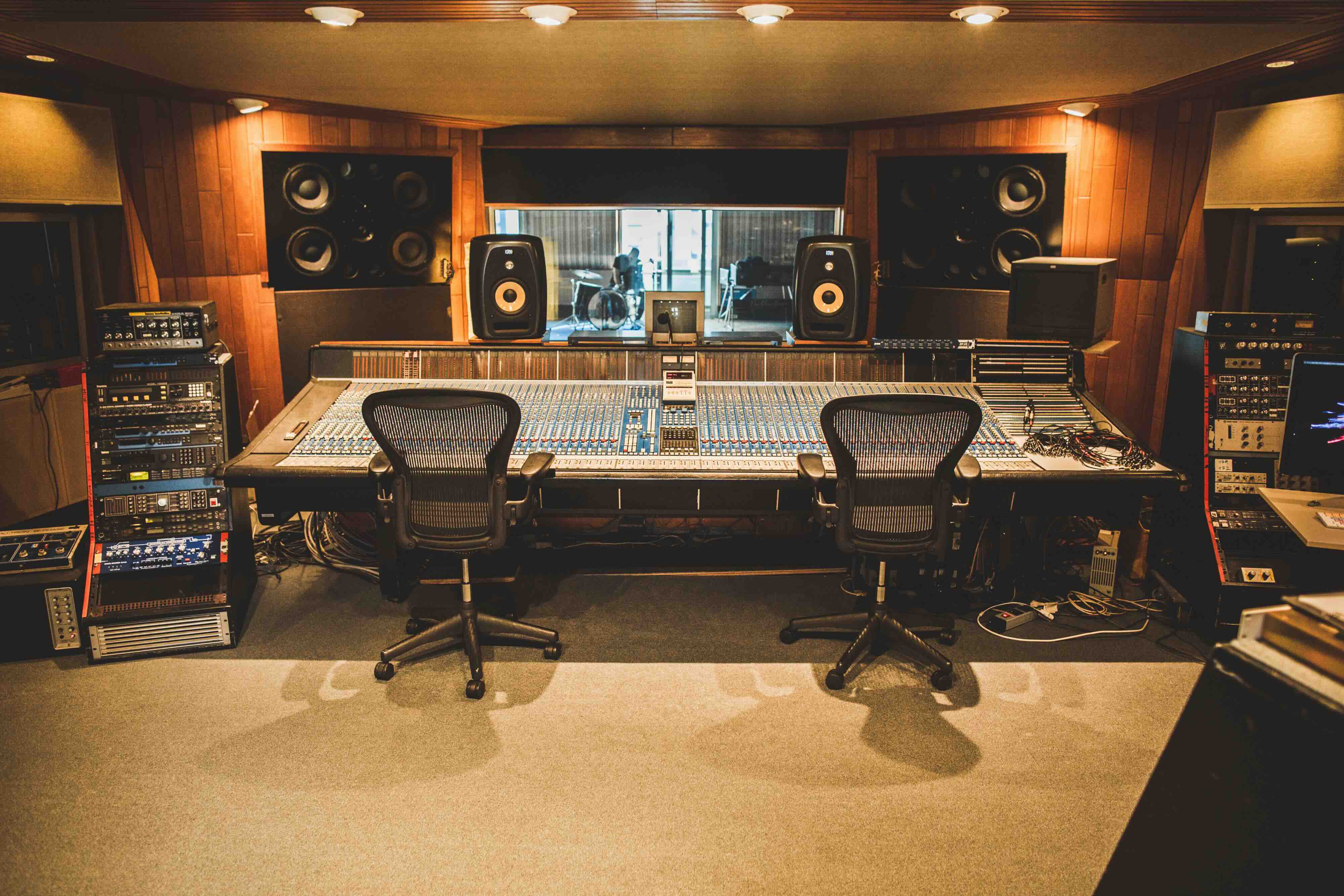
What Makes a Studio Truly World-Class?
What separates a good studio from a truly world-class one? At ProStudioTime, we’ve spent years working with studios across the globe, booking sessions for artists at every level, from legends to newcomers. And what we’ve learned is this: a great studio isn’t defined by just one thing. It’s a finely tuned ecosystem. In this article, we’ll break down what we believe defines high-end recording studio standards, based on our real-world experience.
Acoustic Design Is Everything
In a world-class studio, the quality of the sound starts with the room itself. Acoustic design isn’t about perfection. It’s about purpose. Different spaces serve different sonic goals, and the design reflects that.
In a live room, the acoustics are meant to enhance the natural tone of instruments. A well-designed space might bring out the body of a kick drum or the air around a string section, depending on how reflections, decay, and room dimensions are managed. The sound of the room becomes part of the recording itself.
Sound City Studios is perhaps one of the best examples of how a live room can shape the sonic character of a record. It’s where Nirvana recorded Nevermind, and Dave Grohl has spoken at length about how the sound of that room defined the punch and power of the drums. The way the space enhanced transients and added natural depth became a key part of the album’s identity.
In contrast, control rooms are designed for precision. The goal is to provide a clear and balanced monitoring environment that allows producers and engineers to make decisions that translate accurately outside the studio, whether the track ends up on earbuds, club systems, or car stereos.
That’s why high-end studios invest heavily in thoughtful acoustic treatment: bass traps, diffusion panels, floating floors, and isolation techniques that ensure the room contributes to the music in the right way.
Signature Consoles & Rare Gear
We’re returning to Sound City Studios here for good reason. The studio’s legendary Neve 8028 console is widely credited with shaping the sound of Nevermind. Producer Butch Vig has said the console’s warmth, saturation, and punch gave the drums and guitars their unmistakable tone. It’s not just about EQ. It’s how the console responds to dynamics, how it blends signals, and how it imparts a specific texture. That console was so integral to the album that Dave Grohl later bought it and built Studio 606 around it.
Other consoles have left similar marks on music history. The EMI TG12345, used on Abbey Road and Dark Side of the Moon, and the SSL 4000G, which defined the punch of ’80s pop and hip-hop, are more than just tools. They’re part of the sound.

Engineering & Production Talent
Even the best room and gear won’t deliver world-class results without someone behind the desk who knows how to use them. We’ve seen firsthand how the right engineer or producer can turn a session around completely.
Take Sylvia Massy, for example, known for her work with Tool and Johnny Cash, amongst others. Her approach combines technical mastery with a deep sense of experimentation. It’s not just about signal chains and compressors, it’s about capturing something unique in the performance.
Or consider Andrew Scheps, who’s worked on albums for Adele, Red Hot Chili Peppers, and Metallica. His hybrid mixing setup and nuanced understanding of both analog and digital domains consistently produce mixes that translate across any system.
The best engineers don’t just know their gear, they know how to listen. They understand when to push, when to pull back, and how to create an environment where artists deliver their best.
The Creative Experience & Studio Flow
Studios aren’t just technical spaces. They’re creative ones. The way a studio feels can have a huge impact on the kind of work that gets done. We’ve worked with countless artists who’ve told us that the vibe of a studio made or broke their session.
One example that stands out is Electric Lady Studios in New York. Built by Jimi Hendrix and designed to break away from the sterile studio environments of the time, it’s a space filled with curves, color, and comfort. Artists from Frank Ocean to Patti Smith have talked about how the atmosphere there helped unlock something creatively.
At a practical level, studio flow matters too. Is the control room easily accessible from the live room? Can you go from writing to tracking without changing setups? These details matter, especially when you're trying to maintain momentum during a session.
Reputation & Track Record
A studio’s history often tells you what you can expect from it. There’s a reason why so many artists return to the same rooms again and again. It’s not just nostalgia, it’s trust.
Abbey Road Studios isn’t just where The Beatles made history. It’s also been the home of albums by Pink Floyd, Amy Winehouse, Radiohead, and Adele, not to mention countless film scores. The sound, the staff, and the legacy all contribute to its continued status as one of the most respected studios in the world.
Other examples? Sunset Sound in LA, where Purple Rain was tracked. Or Hansa Studios in Berlin, where artists like David Bowie and U2 have used the unique ambiance of the Meistersaal to shape the sonic identity of their records. The natural reverb and atmosphere of the space have made it a creative home for some of music’s most iconic moments.
Reputation isn’t just marketing. It’s earned over time through consistently excellent work.

Support Services That Make a Difference
When sessions are underway, even small distractions can throw off an artist’s creative flow. That’s why world-class studios invest in logistics and support services that keep artists in the zone from the moment they arrive.
Many high-end studios offer 24/7 access, allowing sessions to run on the artist’s clock, not the studio’s schedule. Creativity doesn’t keep office hours, and the best studios are built with that in mind.
Some larger facilities come with their own cafeterias or kitchens, where staff or chefs can prepare meals for the session team. In-house catering keeps things running smoothly when sessions stretch into the night.
One of the biggest advantages is on-site technical support. When something goes wrong with a console, outboard gear, or microphone, there’s no need to wait for an external technician to show up. Experienced in-house engineers can fix issues on the spot.
And when it comes to residential studios, many go the extra mile, offering airport shuttles, private drivers, and full-service hospitality teams. It’s not about luxury for its own sake, it’s about removing friction so that the only thing the artist has to focus on is the music.
In Summary
There’s no single feature that makes a recording studio world-class. It’s the combination of elements working together: thoughtful acoustic design, high-end gear, skilled engineers, creative ambiance, professional support, and a proven track record. These studios aren’t just technically capable; they’re built to inspire, to capture lightning in a bottle, and to remove every obstacle between the artist and the final track.
That’s what separates a good studio from a great one. It’s not just about recording clean audio. It’s about creating an environment where unforgettable music gets made.
